As the summer heat approaches, it's important to remember that our furry friends also feel the effects of the rising temperatures. Dogs living in urban areas face unique challenges during hot summers, including limited access to shade, concrete surfaces that retain heat, and busy streets that make it difficult to find a cool spot to rest. To help urban dog owners navigate these challenges, we've put together a survival guide for keeping your pup safe and comfortable during the hottest months of the year. Introducing "The Urban Dog's Survival Guide to Hot Summers": a comprehensive resource to ensure the well-being of your canine companion in the urban heat.
The first step in keeping your urban dog safe during hot summers is to understand the signs of heat exhaustion. Dogs can quickly become overheated and dehydrated, leading to serious health complications. Symptoms of heat exhaustion include excessive panting, drooling, lethargy, vomiting, and collapse. By recognizing these signs early on, you can take action to cool your dog down and prevent further complications. In this guide, we'll provide tips for preventing heat exhaustion and keeping your dog cool and comfortable all summer long.
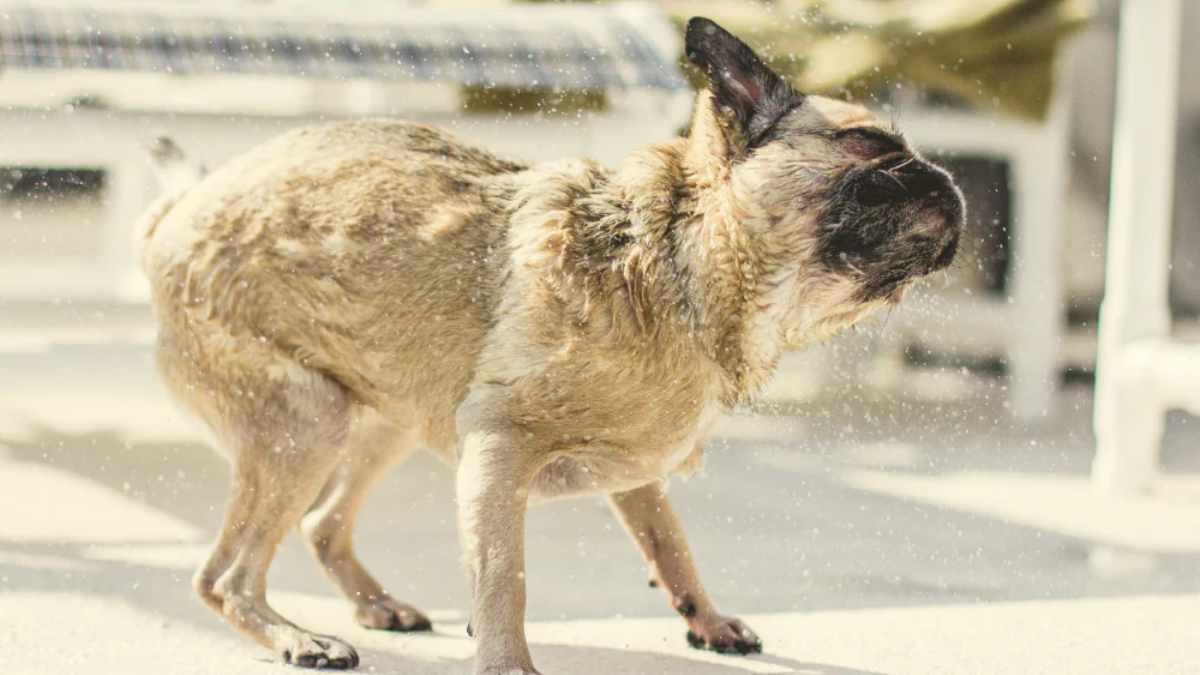
Understanding Heat Risks for Urban Dogs
Urban dogs face a unique set of challenges during hot summers. Understanding the risks associated with high temperatures is essential for keeping your furry friend healthy and safe.
Heat exhaustion and heatstroke are the most common heat-related illnesses in dogs. These conditions can occur when a dog's body temperature exceeds 104°F. Dogs with thick fur, short snouts, or pre-existing health conditions are at a higher risk of developing heat-related illnesses.
Here are some signs to look out for if you suspect your dog may be suffering from heat exhaustion or heatstroke:
- Heavy panting
- Rapid heartbeat
- Excessive drooling
- Weakness or lethargy
- Vomiting or diarrhea
- Collapse or loss of consciousness
To prevent heat-related illnesses, it's important to keep your dog cool and hydrated. Provide plenty of fresh water and shade, and avoid exercising during the hottest parts of the day. You can also use cooling products such as vests or mats to help regulate your dog's body temperature.
In extreme cases, it's important to seek veterinary care immediately. Heatstroke can cause organ damage or even death if left untreated. By understanding the risks associated with high temperatures, you can keep your urban dog healthy and happy all summer long.
Recognizing Signs of Heatstroke in Dogs
Early Symptoms
Heatstroke is a serious condition that can be fatal for dogs. It is important to recognize the early symptoms of heatstroke so that you can take immediate action. Some of the early symptoms of heatstroke in dogs include:
- Heavy panting
- Rapid heartbeat
- Excessive drooling
- Reddened gums and tongue
- Vomiting or diarrhea
- Weakness or lethargy
- Lack of coordination
- Collapse or coma

If you notice any of these symptoms in your dog, it is important to take immediate action to cool them down.
Immediate Actions
If you suspect your dog is suffering from heatstroke, it is important to take immediate action. Here are some steps you can take to cool your dog down:
- Move your dog to a cool, shaded area
- Offer your dog cool water to drink
- Wet your dog down with cool water
- Use a fan to help cool your dog down
- Place cool, wet towels on your dog's neck, armpits, and groin
- Do not use ice-cold water or ice to cool your dog down as this can cause shock
If your dog's symptoms do not improve within a few minutes, or if they become more severe, it is important to seek veterinary attention immediately.
By recognizing the early symptoms of heatstroke in dogs and taking immediate action, you can help prevent serious complications and ensure your dog stays safe during hot summers.
Preventing Heat-Related Illnesses
As temperatures rise during the summer months, it's essential to take measures to prevent heat-related illnesses in your urban dog. Here are some tips to keep your furry friend cool and comfortable:
Proper Hydration
Keeping your dog hydrated is crucial in preventing heat exhaustion and dehydration. Provide your dog with plenty of fresh, cool water throughout the day, and consider adding ice cubes to their water bowl to keep it cool. If you're going on a walk or spending time outside, bring a portable water bottle and collapsible bowl to keep your dog hydrated on the go.
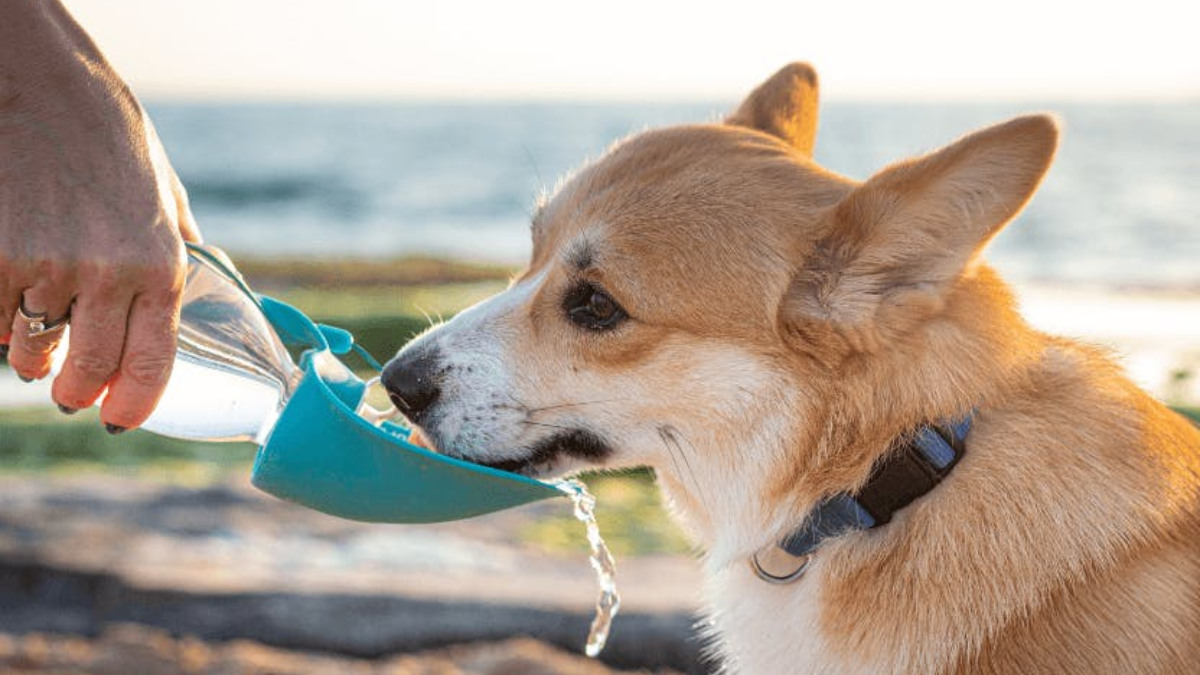
Shade and Ventilation
When spending time outside with your dog, make sure they have access to shade and proper ventilation. Avoid spending extended periods in direct sunlight, especially during the hottest parts of the day. Consider setting up a canopy or umbrella to provide shade, and make sure your dog has access to a cool, well-ventilated area inside your home.
Appropriate Exercise Routines
While exercise is essential for your dog's health, it's important to adjust your routine during the hot summer months. Avoid strenuous exercise during the hottest parts of the day, and opt for early morning or late evening walks instead. Consider indoor activities, such as obedience training or playing fetch in a cool, air-conditioned room.
By following these tips, you can help prevent heat-related illnesses in your urban dog and ensure they stay cool and comfortable during the hot summer months.
Cooling Techniques for Dogs
During hot summers, it's important to keep your furry friend cool to avoid heat exhaustion. Here are some effective cooling techniques for dogs:
Water Activities
Water activities are a fun way to keep your dog cool and entertained. Some popular water activities for dogs include:
- Swimming in a pool or lake
- Playing in a sprinkler or hose
- Splashing in a kiddie pool
When introducing your dog to water activities, make sure to supervise them at all times and provide them with a life jacket if necessary.

Cooling Products
There are many cooling products available on the market that can help regulate your dog's body temperature. Some popular cooling products include:
- Cooling mats or beds
- Cooling vests or bandanas
- Frozen dog treats or toys
When using cooling products, make sure to follow the manufacturer's instructions and monitor your dog's behavior to ensure their comfort.
DIY Cooling Methods
If you're on a budget or prefer a more natural approach, there are several DIY cooling methods you can try. Some effective DIY cooling methods for dogs include:
- Frozen water bottles or ice packs wrapped in a towel for your dog to lay on
- Homemade frozen dog treats made with ingredients like yogurt and fruit
- Using a spray bottle filled with cool water to mist your dog's fur
When using DIY cooling methods, make sure to use safe and non-toxic materials and monitor your dog's behavior to ensure their comfort.
By using these cooling techniques, you can help your dog beat the heat and enjoy the summer months comfortably.
Summer Dog Care Essentials
Protective Gear
During hot summers, it is important to protect your furry friend from the sun's harmful rays. A sunburn can be painful and dangerous for your dog. Consider investing in a dog-specific sunscreen that is safe for them to lick off. You can also purchase protective clothing such as lightweight shirts or vests to keep them cool and protected.
Another essential piece of protective gear is a pair of sunglasses. Dogs with light-colored eyes are particularly susceptible to eye damage from the sun. Sunglasses can help protect their eyes from harmful UV rays and keep them comfortable on bright days.
Grooming Tips
Proper grooming is essential for your dog's comfort and health during hot summers. Regular brushing helps remove excess fur and prevents matting, which can trap heat against the skin. If your dog has a thick coat, consider giving them a summer haircut to keep them cool.
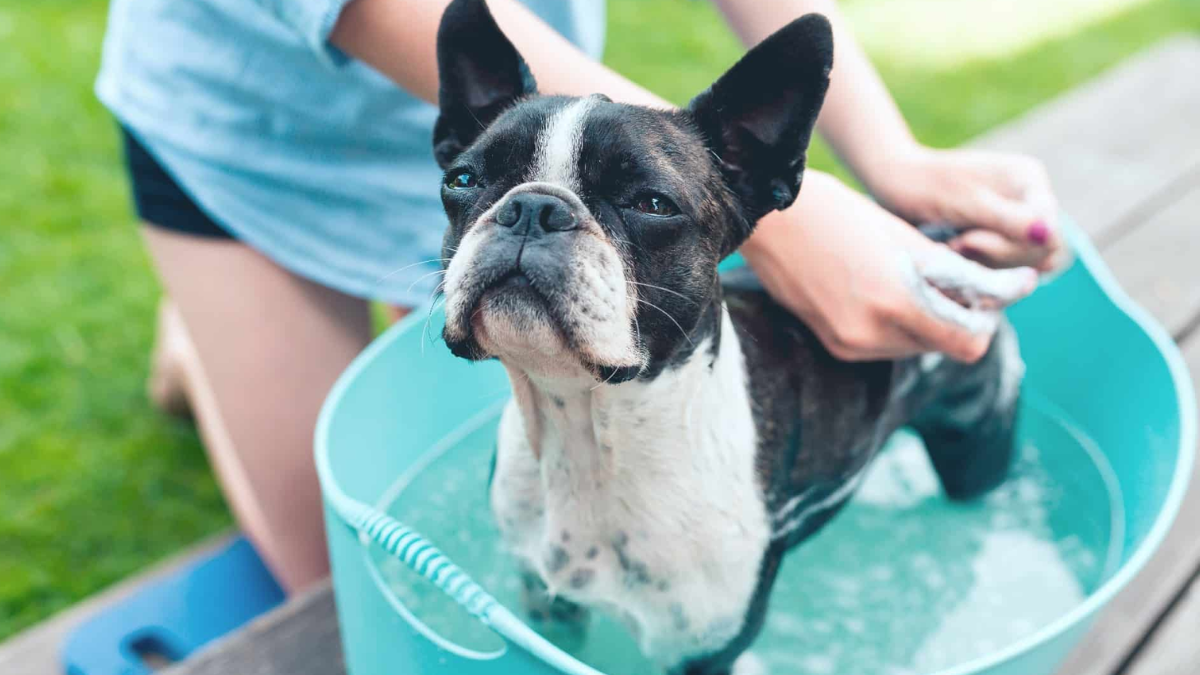
Bathing your dog more frequently during hot weather can also help keep them cool and comfortable. Use a mild, dog-specific shampoo and rinse thoroughly to prevent skin irritation. However, be careful not to over-bathe your dog as this can strip their skin of natural oils.
Paw Protection
Hot pavement and sand can burn your dog's paws, so it's important to take steps to protect them. Consider investing in a pair of booties to protect their paws from hot surfaces. If your dog is not a fan of booties, try walking them in grassy areas or during cooler times of the day.
Another option is to apply a paw balm or wax to their paws before going outside. This will create a protective barrier and prevent their paws from drying out or cracking.
By following these summer dog care essentials, you can ensure that your furry friend stays cool, comfortable, and healthy during hot weather.
Navigating the Urban Heat Island Effect
Planning Walk Routes
During hot summer months, it is important to plan dog walking routes that avoid areas with high levels of concrete, asphalt, and other heat-absorbing surfaces. These surfaces contribute to the urban heat island effect, which can make temperatures in cities several degrees hotter than surrounding rural areas.
When planning routes, consider areas with trees, grass, and other vegetation, as these can help provide shade and cool down the surrounding air. Additionally, consider walking routes near bodies of water, such as lakes or rivers, as these can help cool down the surrounding area.
Timing of Outdoor Activities
To avoid the hottest parts of the day, it is recommended to schedule outdoor activities with dogs during early morning or late evening hours. During these times, temperatures are typically cooler and more comfortable for both dogs and their owners.
If outdoor activities must occur during the hottest parts of the day, it is important to take frequent breaks in shaded areas and provide ample amounts of water to prevent dehydration and heat exhaustion.
By planning walk routes and timing outdoor activities appropriately, dog owners can help their furry friends navigate the urban heat island effect and stay cool and comfortable during the hot summer months.
Emergency Preparedness
First Aid Kit Essentials
In case of an emergency, it is important to have a well-stocked first aid kit for your dog. A basic kit should include items such as gauze, adhesive tape, scissors, tweezers, antiseptic wipes, and a thermometer. It is also important to include any medications your dog may need, as well as a copy of their medical records.
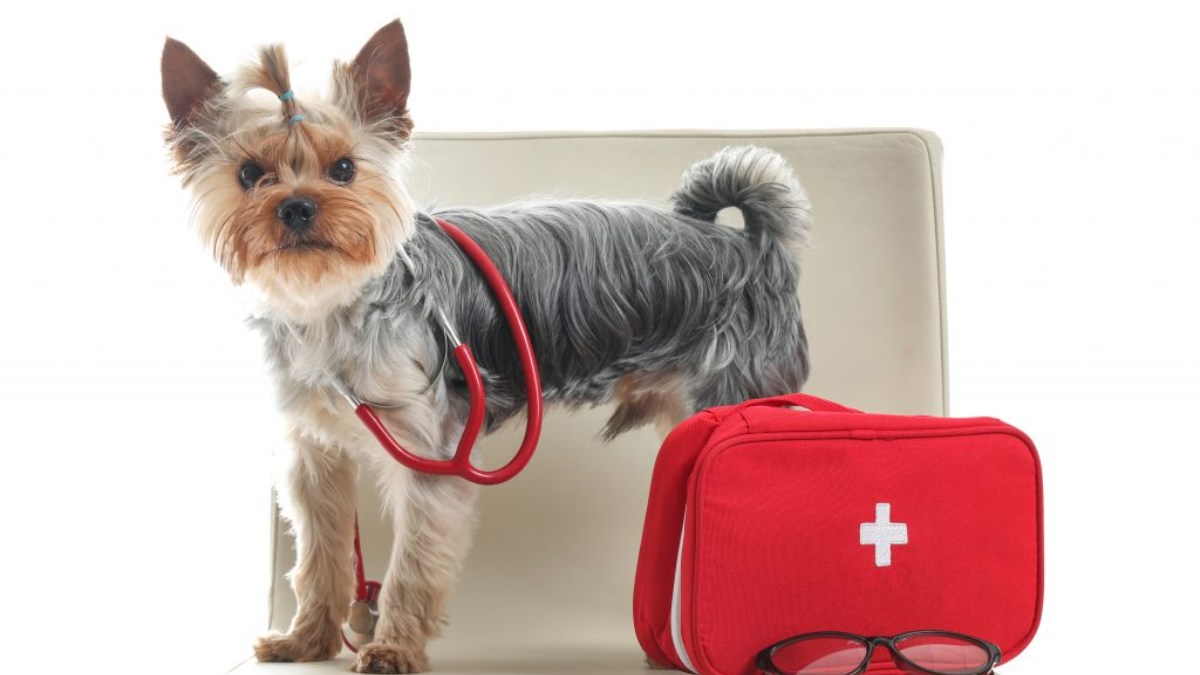
Veterinarian Contact Information
It is crucial to have your veterinarian's contact information readily available in case of an emergency. Make sure to have their phone number, address, and emergency contact information easily accessible. It is also a good idea to have the contact information for an emergency animal hospital in case your regular veterinarian is unavailable.
By being prepared with a first aid kit and veterinarian contact information, owners can ensure that their dogs are well taken care of in case of an emergency.
Traveling with Your Dog in Summer
Car Safety
When traveling with your dog in summer, it's important to keep them safe and comfortable in the car. Make sure to never leave your pup alone in the car, even for a few minutes, as the temperature inside can quickly rise to dangerous levels. Additionally, it's recommended to keep your dog in a well-ventilated crate or secured with a seatbelt to prevent injury in case of an accident.
To keep your dog cool during car rides, consider using sunshades on the windows and keeping the air conditioning on. You can also freeze a water bottle and place it in a towel for your dog to lay on or use a cooling mat to help regulate their body temperature.
Public Transport Tips
Traveling with your dog on public transport can be a bit more challenging, but with some preparation, it can be a breeze. Before taking your dog on public transport, make sure to check the rules and regulations of the specific form of transportation, as some may require a muzzle or proof of vaccination.
When riding on buses or trains, keep your dog on a leash and under control at all times. It's also recommended to bring a towel or blanket for your dog to sit on and to carry water and a collapsible bowl for hydration.
Overall, traveling with your dog in summer can be a fun and rewarding experience as long as you prioritize their safety and comfort. By following these tips, you and your furry friend can enjoy all the summer adventures together.
Dealing with Pests and Parasites
When it comes to hot summers, pests, and parasites can be a real problem for urban dogs. Fleas, ticks, and mosquitoes can cause discomfort and transmit diseases. Here are some tips for dealing with these pests and parasites:
- Use flea and tick preventatives: Consult with your veterinarian to find the best flea and tick preventatives for your dog. These products come in various forms, including topical treatments, collars, and oral medications. Be sure to follow the instructions carefully and use the product consistently.
- Keep your yard clean: Regularly mow your lawn and remove any standing water to reduce the breeding grounds for mosquitoes. Keep your yard free of debris and trash to discourage rodents and other pests.
- Check your dog regularly: Inspect your dog's coat for ticks and fleas after walks or outdoor playtime. Look for any signs of bites, itching, or redness. Use a flea comb to remove any fleas or eggs from your dog's coat.
- Use mosquito repellent: Apply a pet-safe mosquito repellent to your dog's coat before outdoor activities. You can also use a mosquito net or keep your dog indoors during peak mosquito hours.
- Clean your home: Regularly vacuum your carpets, furniture, and pet bedding to remove any flea eggs or larvae. Wash your dog's bedding and toys in hot water to kill any parasites.
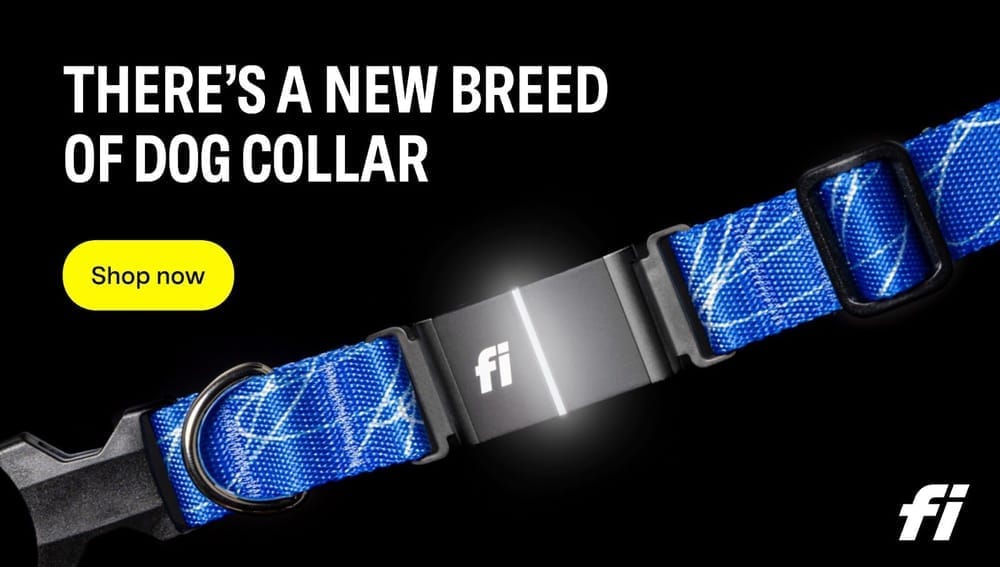
By following these tips, you can help protect your urban dog from pests and parasites during hot summers.
Seasonal Dog Diet Adjustments
During hot summers, it is important to adjust your dog's diet to keep them healthy and hydrated. Here are some tips to help you make the necessary adjustments:
Increase Water Intake
Dogs need to stay hydrated during the hot summer months, so it is important to make sure they have access to plenty of fresh, clean water. You can encourage your dog to drink more water by adding ice cubes to their water bowl or by using a pet water fountain.
Adjust Food Portions
During the summer, dogs may not have as much of an appetite due to the heat. It is important to adjust their food portions accordingly to prevent overeating or undereating. You can also consider feeding your dog smaller, more frequent meals throughout the day to help them stay energized and hydrated.
Choose Cooling Foods
Some foods can help keep your dog cool during hot weather. These include foods with high water content, such as watermelon, cucumbers, and strawberries. You can also consider feeding your dog frozen treats made from plain yogurt and fruit.

Avoid Certain Foods
Some foods can be harmful to dogs during hot weather. Avoid feeding your dog fatty or greasy foods, as they can cause digestive issues and dehydration. Also, avoid giving your dog alcohol, chocolate, and caffeine, as these can be toxic to dogs.
By making these simple diet adjustments, you can help your dog stay healthy and comfortable during the hot summer months.
Community Resources and Support
During hot summers, urban dog owners need to have access to community resources and support. Here are some options to consider:
- Dog Parks: Many cities have designated dog parks where dogs can run and play off-leash. These parks often have shaded areas and water fountains to help keep dogs cool. Check with your local parks department to find a dog park near you.
- Pet Stores: Pet stores often sell products that can help keep dogs cool, such as cooling mats, bandanas, and vests. Some stores also offer grooming services that can help keep dogs' coats trimmed for the summer heat.
- Veterinarians: If you're concerned about your dog's health during the summer, your veterinarian can offer advice on how to keep your dog cool and comfortable. They can also provide medical care if your dog experiences heat stroke or other heat-related illnesses.
- Dog Walking Services: If you're unable to walk your dog during the hottest parts of the day, consider hiring a dog walking service. These services can take your dog for walks during cooler times of the day and provide water and shade breaks as needed.
- Online Communities: There are many online communities for dog owners where you can connect with others and share tips and advice for keeping your dog cool during the summer. These communities can be a great source of support and information.
By taking advantage of these community resources and support options, urban dog owners can help ensure that their furry friends stay safe and comfortable during hot summers.
Conclusion:
In conclusion, The Urban Dog's Survival Guide to Hot Summers provides invaluable insights for ensuring your canine companion stays safe and comfortable in urban environments during the warmer months. By following the tips outlined in this guide, such as providing ample hydration, avoiding hot pavement, and seeking shade during peak sun hours, you can help prevent heat-related illnesses and keep your dog happy and healthy.
Additionally, incorporating cooling techniques like wetting their fur or using cooling vests can provide relief from the heat. Remember to pay attention to your dog's behavior and signs of distress, as early intervention can make a significant difference in their well-being. With proactive measures and proper care, you can enjoy the summer months with your urban dog while minimizing the risks associated with hot weather.
Always prioritize your dog's safety and comfort, and be prepared to adapt your routine as needed to ensure they thrive in the urban environment, even during the hottest days. By following The Urban Dog's Survival Guide to Hot Summers, you can foster a strong bond with your pet and create lasting memories while navigating the challenges of city living in warm weather.




